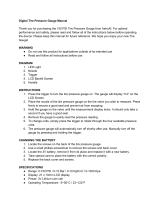
wc_si000540gb_FM10.fm
10
Safety Information E2200 / E3000ES
1.2 Machine Description and Intended Use
This machine is a hydronic surface heater. The Wacker Neuson Hydronic Surface
Heaters consist of a trailer-mounted enclosure that houses an optional diesel
generator, a hydronic heater, electric motors, fixed pump(s) and plumbing, a diesel
(or gas) burner, a fuel tank, and a hose handling system.
The hydronic heating system utilizes a burner that indirectly warms the Heat
Transfer Fluid (HTF). The warmed HTF is continuously circulated through a
vented, closed loop hose system. A positive displacement pump pushes the
warmed HTF through the hose system, thereby radiating and transferring the heat
to the required application area.
An insulated blanket may be laid over the hoses to increase efficiency. The low
HTF level protection device shuts down the machine if the HTF level drops below
minimum operational capacity.
This machine is intended to be used as a surface heater in order to thaw frozen
ground, to cure concrete, or to prevent frost and freezing. In addition, when used
with other Wacker Neuson accessories, this machine can be used to heat air.
This machine has been designed and built strictly for the intended use(s) described
above. Using the machine for any other purpose could permanently damage the
machine or seriously injure the operator or other persons in the area. Machine
damage caused by misuse is not covered under warranty.
The following are some examples of misuse:
■ Using the machine to heat anything other than what is stated above
■ Using the machine to pump anything other than the factory recommended Heat
Transfer Fluid
■ Using the generator (if equipped) to power anything other than the machine
itself or Wacker Neuson accessory machines, as instructed in the Operator's
Manual
■ Using the machine as a ladder, support, or work surface
■ Using the machine to carry or transport passengers or equipment
■ Using the machine to tow other machines
■ Operating the generator (if equipped) in a manner that is inconsistent with all
federal, state, and local codes and regulations
■ Operating the machine outside of factory specifications
■ Operating the machine in a manner inconsistent with all warnings found on the
machine and in the Operator’s Manual
This machine has been designed and built in accordance with the latest global
safety standards. It has been carefully engineered to eliminate hazards as far as
practicable and to increase operator safety through protective guards and labeling.
However, some risks may remain even after protective measures have been taken.
They are called residual risks. On this machine, they may include exposure to:
■ Heat, noise, and exhaust from the engine or hydronic heater
■ Burns from the HTF or radiant heat from the hoses





















